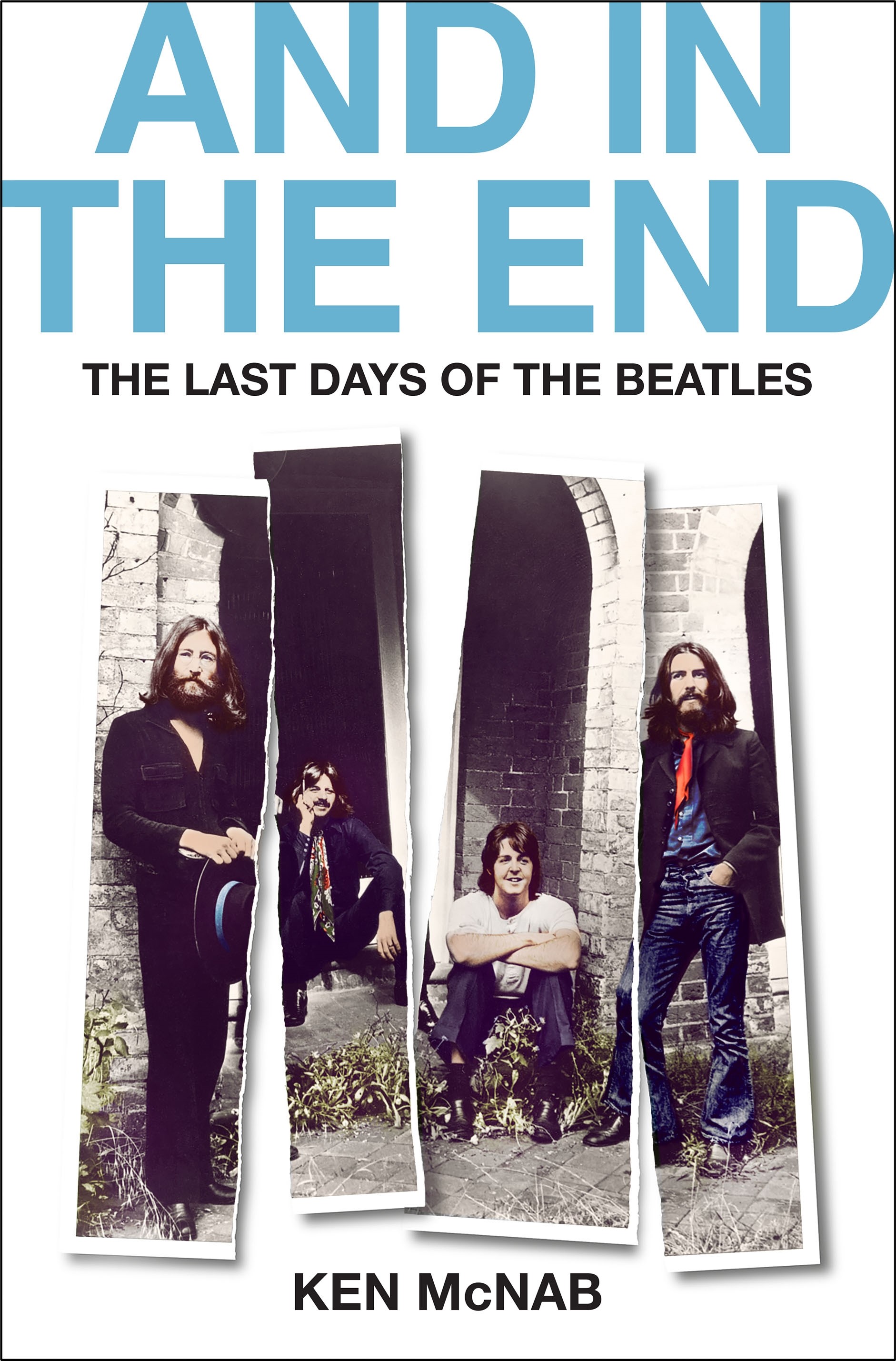Ken McNab's in-depth look at The Beatles' acrimonious final year is a detailed account of the breakup featuring the perspectives of all four band members and their roles. A must add to the collection of Beatles fans, AND IN THE END is full of fascinating information available for the first time.
McNab, in a compelling month-by-month chronology, reconstructs the seismic events of 1969, when The Beatles reached new highs of creativity and new lows of the internal strife that would ultimately destroy them. Between the pressure of being filmed during rehearsals and writing sessions for the documentary Get Back, their company Apple Corps facing bankruptcy, Lennon's heroin use and musical disagreements, the group was arguing more than ever before and their formerly close friendship began to disintegrate.
In the midst of this rancor, however, emerged the glorious disharmony of Let It Be and the ragged genius of Abbey Road, their incredible farewell love letter to the world.
Ken McNab interviewed over thirty people who provided eyewitness stories from 1969, including:
Anthony Barnett (poet, musician, and music essayist): McNab persuaded Barnett to break a 50-year silence on his version of events and explain why, after all this time, he still nurses a bitter grievance towards John Lennon and Yoko Ono after they participated in a concert of avant-garde musicians, which ended acrimoniously.
Les Parrott (Let It Be cameraman): Parrot was one of only a handful of cameramen working on the Let It Be film project and had a ringside seat to the infighting that came to define the ill-fated production, which showed The Beatles on the brink of implosion. He was also in the studio the day George Harrison famously walked out on the band.
Bruce McBroom (American photographer): McBroom was picked to film The Beatles for what turned out to be one of their last photo sessions as a band and reveals for the first time a surprising link between the band and Peter Sellers that helped him book the gig.
Derek Seagrove (painter and decorator at Abbey Road studios): Seagrove was one of three painters who happened to be working at EMI Studios on the day the famous cover for Abbey Road was being shot and surprisingly made it into the photograph. His interview with McNab is the first time he has ever shared his recollections from that day and the other occasions he sat next to The Beatles in the studio canteen.
David Milne (doctor at Lawson Memorial Hospital, Golspie, Scotland): While Lennon and Ono were recovering from a car crash in the Scottish Highlands, Lennon struck up a warm friendship with the ward doctor, David Milne. Dr. Milne shares his own recollections of his conversations with Lennon who, at that time through his global peace campaign, was perhaps the most famous and outspoken person on the planet.
Joyce Everett (nurse, Golspie Hospital): Like Dr. Milne, Ms. Everett was on duty for much of the time the Lennons recovered in hospital from the car crash. And she revealed her own views on the maverick couple while also telling of a special phone call from another Beatle.
Dan Richter (American actor): Lennon’s self-confessed dope buddy, Richter pulls back the curtain on John’s heroin use, his mood swings that left him like a volcano trapped in ice and the fractured relationships that had placed the Beatles on life support.
Ray Connolly (journalist): Connolly was one of the few journalists with a foot in both the Lennon and McCartney camps. In December 1969, Lennon told him he had quit The Beatles but swore Connolly to secrecy. Out of loyalty to Lennon, he stuck to his vow of Omerta – only to lose out on the biggest showbiz story of the decade. During exclusive interviews with McNab, Connolly was also able to shine a light into the state of minds of both Lennon and McCartney as intense business and music pressures pulled them apart during this fractious period.
Andre Perry (Canadian music engineer): Perry was a young music engineer who, in June 1969, was invited to record Lennon’s “Give Peace A Chance” song inside a tiny Montreal hotel bedroom. He revealed to McNab a 50-year secret about the song that became a worldwide peace anthem. And his recollections reveal for the first time stunning new insights into the creation of the song.
Russ Gibb (American DJ): Gibb was a Detroit DJ who was in on the ground floor of the “Paul is Dead” controversy. During several interviews with McNab, he laid out the sequence of events that made him (and the world) think that, perhaps, Paul McCartney really was dead.
ABOUT THE AUTHOR
KEN McNAB is a lifelong Beatles fan and an award-winning journalist and author who has worked on a number of national newspapers in Scotland. He lives in Glasgow with his wife Susanna and children Jennifer and Christopher.







